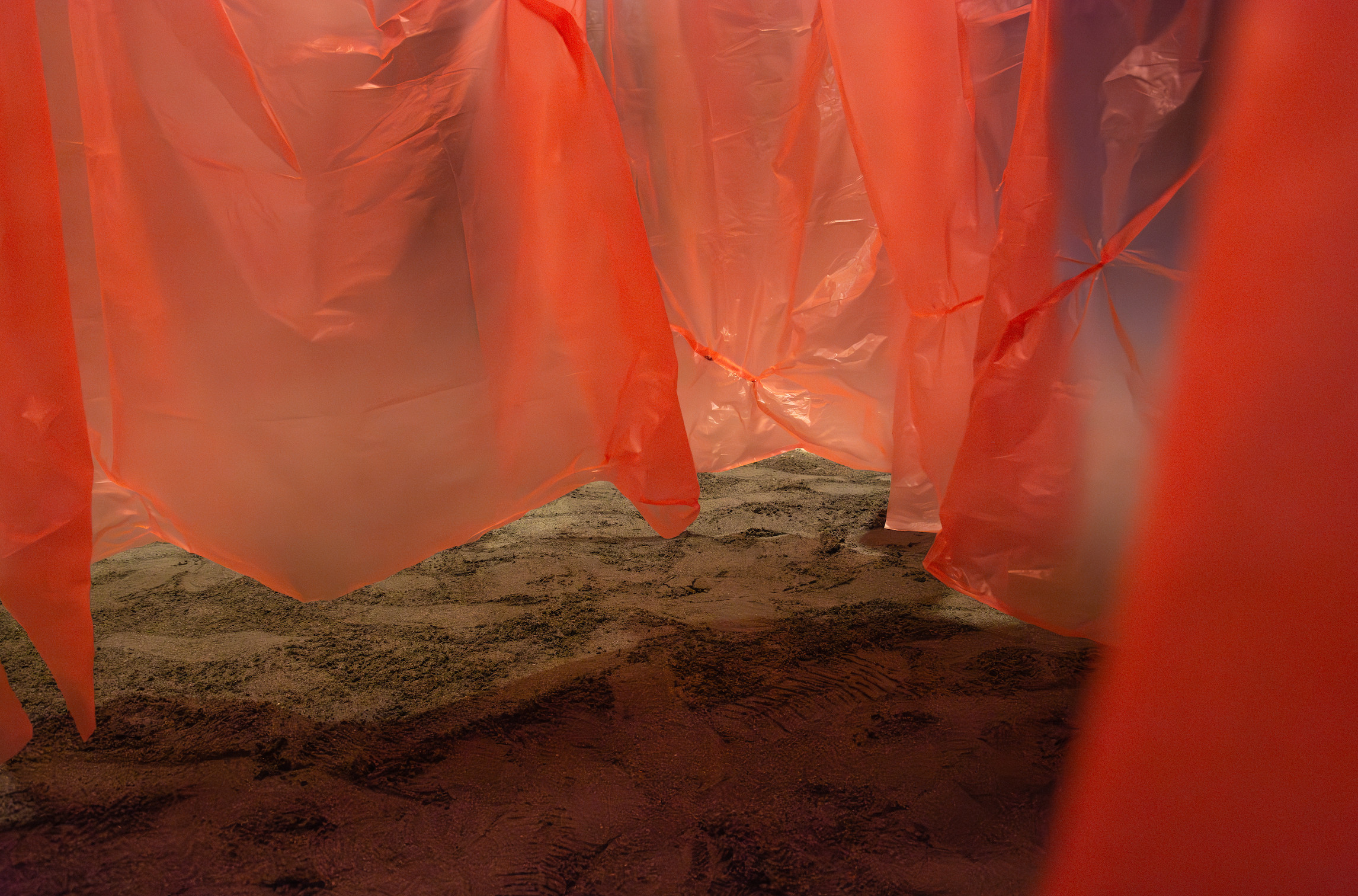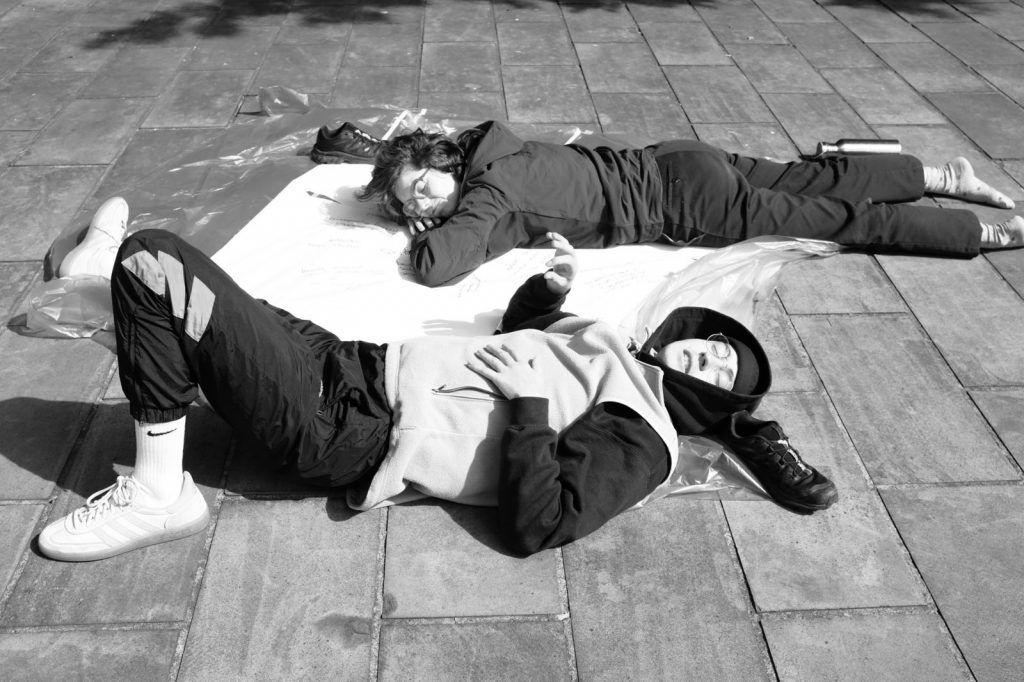Drawing on many influences, from displacement systems to futuristic utopian scenarios and habitual reflection, “Anthropocene” explores power structures in the context of sacrifice zones, dwelling upon the fragile equilibrium of protecting and using land and the unequal consequences that the waste of resources produce.
Installation, 2023
Ray Frey, Tak Tsung NG and Leonie Dittli
The beginning of the Anthropocene marks a point, where our imprints on the land cut deeper and last longer. Where human existence is more than ever bound to resources and the relationship to land has in many parts and aspects ceased to be a sacred one. The interactive installation “Anthropocene”, conceived by Ray Frey, Tak Tsung NG and Leonie Dittli, invites visitors to reflect on their consumption of resources and their ecological footprint in the constant fights around scarce resources.
Sixteen long, red plastic tarpaulins hang from the ceiling.Plastic, a material that is affordable for the majority, a milestone in creating convenience, yet one of the biggest polluters. In the installation, the plastic sheets were cut up and melted together with hot air, simultaneously extending and scarring them. They are arranged in a round four-four-four format, forming a center. The center is hidden from the visitors view. Dark, wet sand covers the floor. Sand as a material that is extracted from the land and used on construction sites. Footprints indicate an omnipresent yet invisible human presence. Visitors are invited to enter the installation and leave their own footprints. By stepping into the installations, the plastic sheets are set in motion and produce a ghostly swish.



Process
Conversations about the human relationship to waste and the way this relationship informs human behavior marked the starting point of the group’s project development. They started comparing different habits in different countries and societies and identified how things/trash/humans are re/mis/de-placed. Natural disasters or newly built dams lead to the displacement communities, trash disposal sites start to compete with living grounds, radioactive material demands remote places for storage…What kind of systems, institutions and social forces are effectively behind such logics of displacement? What and who is being sacrificed for what? Is there still something sacred left?
The group built upon the concepts of “systems of displacement”, “sacrifice zone”, “equilibrium” and “concept of land” to try to find some answers for these questions and raise new questions and challenges. In the beginning they wanted to originate an own company dealing with “displacing trash”. They wanted to build upon the idea of critical future scenario building and speculative theater. It was challenging for them to find common ground on how speculative and far from reality they could go with their project, without removing the actual urgency from the already present and lived reality around scarce resources. They started talking more and more about which feeling and experience they wanted to evoke in people instead of being very speculative.




